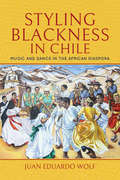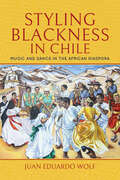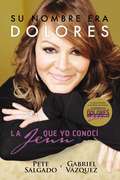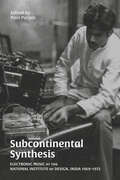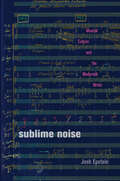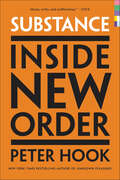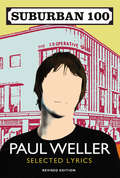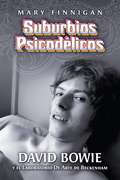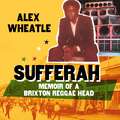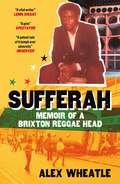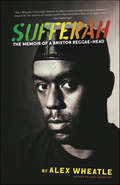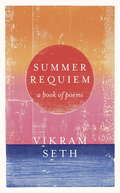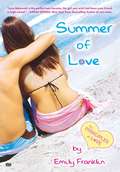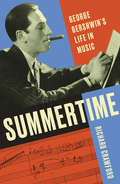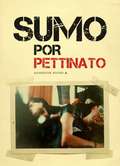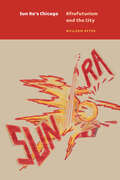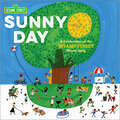- Table View
- List View
Styling Blackness in Chile: Music and Dance in the African Diaspora
by Juan Eduardo WolfChile had long forgotten about the existence of the country’s Black population when, in 2003, the music and dance called the tumbe carnaval appeared on the streets of the city of Arica. Featuring turbaned dancers accompanied by a lively rhythm played on hide-head drums, the tumbe resonated with cosmopolitan images of what the African Diaspora looks like, and so helped bring attention to a community seeking legal recognition from the Chilean government which denied its existence. Tumbe carnaval, however, was not the only type of music and dance that Afro-Chileans have participated in and identified with over the years. In Styling Blackness in Chile, Juan Eduardo Wolf explores the multiple ways that Black individuals in Arica have performed music and dance to frame their Blackness in relationship to other groups of performers—a process he calls styling. Combining ethnography and semiotic analysis, Wolf illustrates how styling Blackness as Criollo, Moreno, and Indígena through genres like the baile de tierra, morenos de paso, and caporales simultaneously offered individuals alternative ways of identifying and contributed to the invisibility of Afro-descendants in Chilean society. While the styling of the tumbe as Afro-descendant helped make Chile’s Black community visible once again, Wolf also notes that its success raises issues of representation as more people begin to perform the genre in ways that resonate less with local cultural memory and Afro-Chilean activists’ goals. At a moment when Chile’s government continues to discuss whether to recognize the Afro-Chilean population and Chilean society struggles to come to terms with an increase in Latin American Afro-descendant immigrants, Wolf’s book raises awareness of Blackness in Chile and the variety of Black music-dance throughout the African Diaspora, while also providing tools that ethnomusicologists and other scholars of expressive culture can use to study the role of music-dance in other cultural contexts.
Styling Blackness in Chile: Music and Dance in the African Diaspora
by Juan Eduardo WolfAn analysis of how Afro-Chilean performers of music and dance in Arica frame their Blackness in regards to other performers.Chile had long forgotten about the existence of the country’s Black population when, in 2003, the music and dance called the tumbe carnaval appeared on the streets of the city of Arica. Featuring turbaned dancers accompanied by a lively rhythm played on hide-head drums, the tumbe resonated with cosmopolitan images of what the African Diaspora looks like, and so helped bring attention to a community seeking legal recognition from the Chilean government which denied its existence.Tumbe carnaval, however, was not the only type of music and dance that Afro-Chileans have participated in and identified with over the years. In Styling Blackness in Chile, Juan Eduardo Wolf explores the multiple ways that Black individuals in Arica have performed music and dance to frame their Blackness in relationship to other groups of performers—a process he calls styling. Combining ethnography and semiotic analysis, Wolf illustrates how styling Blackness as Criollo, Moreno, and Indígena through genres like the baile de tierra, morenos de paso, and caporales simultaneously offered individuals alternative ways of identifying and contributed to the invisibility of Afro-descendants in Chilean society. While the styling of the tumbe as Afro-descendant helped make Chile’s Black community visible once again, Wolf also notes that its success raises issues of representation as more people begin to perform the genre in ways that resonate less with local cultural memory and Afro-Chilean activists’ goals. At a moment when Chile’s government continues to discuss whether to recognize the Afro-Chilean population and Chilean society struggles to come to terms with an increase in Latin American Afro-descendant immigrants, Wolf’s book raises awareness of Blackness in Chile and the variety of Black music-dance throughout the African Diaspora, while also providing tools that ethnomusicologists and other scholars of expressive culture can use to study the role of music-dance in other cultural contexts.“Wolf’s work is exemplary as he critically addresses twenty-first-century deliberations on identity and cultural diversity across the African diaspora.” —Yvonne Daniel, Smith College, Journal of American Folklore“Wolf’s text is a solid contribution to current narratives of self-determination and positioning of Chile’s Afro-descendant population. The book highlights the achievements that music and dance represent for social and cultural processes in Chile, which makes it useful to understanding other Afro-American narratives across the Americas.” —Fernando Palacios Mateos, Ethnomusicology“The book itself will not only prove useful for academics interested in the music of Chile, Latin America, the African Diaspora, Blackness, and in semiotics, but is also written in a style that is accessible to upper-level undergraduates and above.” —P. Judkins Wellington, City University of New York, Journal of Folklore Research
Su nombre era Dolores: La Jenn que yo conocí
by Gabriel Vázquez Aguayo Pete SalgadoLa historia jamás contada del ícono musical, Jenni Rivera, relatada a través de la perspectiva de dos exmánagers, Pete Salgado y Gabriel Vazquez, y es la base para la serie de televisión que se transmitirá en Univision. Este libro nos lleva al ojo del huracán y ofrece una perspectiva a las estrategias y momentos que llevaron a Jenni a los titulares nacionales. Pete Salgado fue un apoyo fundamental en la carrera de Jenni, y lo considerado como su quinto hermano. Salgado trabajó con ella casi una década y ayudó a negociar muchos de sus contratos. Jenni compartió cosas con él, que no compartió con nadie más, y llegó a conocerla en formas que nadie más lo hizo. Los meses previos a la muerte de Jenni estuvieron llenos de traiciones y desilusiones de las personas que ella más amaba y en quienes confiaba. Salgado aborda el tema y lleva a los lectores a descifrar algunos de los tuits publicados por Jenni, así como también esclarece asuntos tales como: ¿Chiquis tuvo un romance con el esposo de Jenni, Esteban? ¿Quién era realmente El Pelón, acerca del que Jenni tuiteaba y qué significaba para ella? ¿Estuvo Jenni involucrada con el cartel de la droga? ¿El narco llamado El Barbie la maltrataba? ¿Iba Jenni a comprar un avión? ¿Fue la muerte de Jenni realmente un accidente? Este libro describe todo lo que pasó hasta ese momento final y, por primera vez, ofrece detalles sobre la belleza, el amor, la complejidad y el dolor de la relación de Jenni con Chiquis, la cual fue muy diferente y mucho más allá de la relación tradicional de madre e hija. Salgado comparte quién era Dolores realmente, la que sus seguidores no conocían y nunca vieron en el escenario... Salgado y Vazquez ofrecen una mejor perspectiva de la vida de «la diva de la banda» por las dos personas involucradas más profundamente en su carrera y que la conocían como nadie más.
Subcontinental Synthesis: Electronic Music at the National Institute of Design, India 1969–1972
by Paul PurgasThe history of India&’s first electronic music studio founded in 1969 at the National Institute of Design in Ahmedabad by David Tudor.Subcontinental Synthesis explores the history of India&’s first electronic music studio, founded in 1969 at the National Institute of Design in Ahmedabad with the support of the composer David Tudor. The essays and writings unravel the narrative and context surrounding the studio as well as the work of the Indian composers who created groundbreaking recordings during its four years of activity. The texts reflect on the role of electronic music within a post-independence India, considering its interconnections with experimental design, radical pedagogies, and the international avant-garde, as well as the encircling conditions of Western ideological soft power within the global expansion of Modernism.ContributorsGeeta Dayal, Alannah Chance, Matt Williams, Shilpa Das, Jinraj Joshipura, You Nakai, Rahila Haque, and Paul Purgas
Sublime Noise: Musical Culture and the Modernist Writer (Hopkins Studies in Modernism)
by Josh EpsteinWhat is the significance of noise in modernist music and literature?When Stravinsky’s Rite of Spring premiered in Paris in 1913, the crowd rioted in response to the harsh dissonance and jarring rhythms of its score. This was noise, not music. In Sublime Noise, Josh Epstein examines the significance of noise in modernist music and literature. How—and why—did composers and writers incorporate the noises of modern industry, warfare, and big-city life into their work?Epstein argues that, as the creative class engaged with the racket of cityscapes and new media, they reconsidered not just the aesthetic of music but also its cultural effects. Noise, after all, is more than a sonic category: it is a cultural value judgment—a way of abating and categorizing the sounds of a social space or of new music. Pulled into dialogue with modern music’s innovative rhythms, noise signaled the breakdown of art’s autonomy from social life—even the "old favorites" of Beethoven and Wagner took on new cultural meanings when circulated in noisy modern contexts. The use of noise also opened up the closed space of art to the pressures of publicity and technological mediation.Building both on literary cultural studies and work in the "new musicology," Sublime Noise examines the rich material relationship that exists between music and literature. Through close readings of modernist authors, including James Joyce, T. S. Eliot, Edith Sitwell, E. M. Forster, and Ezra Pound, and composers, including George Antheil, William Walton, Erik Satie, and Benjamin Britten, Epstein offers a radically contemporary account of musical-literary interactions that goes well beyond pure formalism. This book will be of interest to scholars of Anglophone literary modernism and to musicologists interested in how music was given new literary and cultural meaning during that complex interdisciplinary period.
Substance: Inside New Order
by Peter HookIncludes full set lists not included in the physical edition. In this final installment of his internationally bestselling three-part memoir—including The Hacienda and Unknown Pleasures—British rocker Peter Hook focuses on the 1980s New Wave and Dance Punk scene and the rise of one of the most influential bands of the Second British Invasion: New Order.1980. Resurrected from the ashes of Joy Division after the suicide of its lead singer, Ian Curtis, New Order would become one most critically acclaimed and important bands of the decade and beyond. With their hits "Bizarre Love Triangle", "Perfect Kiss", and "Blue Monday"—the biggest-selling 12-inch single of all time—Peter Hook and company quickly rose to the top of the alternative music scene. Widely regarded as the godfathers of electronic dance music, their sound would influence Moby, The Chemical Brothers, The Postal Service, The Killers, and other acts that followed in their wake.Hook tells the complete, unvarnished story of New Order’s founding and evolution; the band’s experiences in the New York City club scene and rapid rise to international fame, its impact on house music, techno, and rave; and its eventual rancorous dissolution. Full of Hook’s "gleefully profane" (Entertainment Weekly) humor and vivid, witty storytelling, Substance is the most important and certainly the most controversial part of his story, emanating with drugs, booze, and sex. Complete with timelines, discographies, gigographies and track-by-track analysis, and exclusive photographs and archival images from Hook’s personal collection, it is the definitive, comprehensive history of New Order and a compelling snapshot of the '80s cultural scene in all its neon-hued glory.
Suburban 100
by Paul WellerREVISED, UPDATED AND WITH A NEW FOREWORD BY PAUL ABBOTTThis edition of Suburban 100 includes new lyrics from the critically acclaimed albums, 22 Dreams and Wake Up the Nation, which has been nominated for the Mercury Music Award.Paul Weller first burst onto the national music scene with The Jam in 1977 and was quickly marked apart from his contemporaries as a brilliant lyricist. In a writing career that has now spanned three decades, his songs have been acclaimed, imitated and loved by many. Suburban 100 - the first selection of Paul Weller's lyrics - draws on songs written for The Jam, The Style Council and solo releases that, together, tell stories of life and love, rage and romance. The youthful frustrations of small-town life that fuelled Weller's early writing is palpable, as is the angry but poignant response to Thatcher's Britain. His lyrics, rooted in English suburban culture, explore the hopes, dreams and crashing disappointments of ordinary people. They also revel in the mystical beauty of the English country landscape and repeatedly revisit dreamlike childhood summers.For the first time Paul Weller shares his reflections on his lyrics, offering candid insights to his writing process and the inspiration behind some of pop music's best loved songs. Suburban 100 reveals aspects of a famously private man.
Suburbios Psicodélicos: David Bowie y el Laboratorio de Arte de Beckenham
by Alexia Polasky Mary FinniganEl año crucial de David Bowie antes de su ascenso a la fama: por su amiga, amante y casera. Suburbios psicodélicos: David Bowie y el Laboratorio de Arte de Beckenham David Bowie tenía 22 años y todavía vivía con sus padres en el sudeste de Londres cuando, por casualidad, conoció a Mary Finnigan mientras visitaba a sus vecinos de arriba en la cercana Beckenham. Aun un talento no reconocido que frecuentaba clubes populares de Londres en busca desesperada de actuaciones remuneradas, ni siquiera podía soñar con un futuro como un fenómeno del rock a nivel global. La vida comenzó a tomar interesantes giros después de que se mudó con Mary y sus dos hijos en la primavera de 1969. Con un pequeño grupo de pioneros psicodélicos lanzaron el Laboratorio de Arte de Beckenham en un pub local y organizaron un festival de música gratuito en el parque de la ciudad. Ese verano Space Oddity, su primer éxito, llegó a los ránkings y se convirtió en la canción del primer alunizaje. Finalmente estaba camino al estrellato. Se han escrito millones de palabras sobre la vida de Bowie, pero sus primeros días como compositor e intérprete se han visto envueltos en rumores. Aquí está la historia completa de su año crucial en Beckenham, escrita por su amiga, amante y casera; una de las primeras personas que lo alentó y apoyó.
Subway to the Met: Risë Stevens Story
by Kyle CrichtonKyle Chrichton recounts the childhood and opera career of Risë Stevens (1913-2013), who was born in the Bronx and who sang at the Met in the 1940s and 1950s. As this book was published in 1959 and Risë lived to 2013, it does not deal with her post-operatic life. Major influences were her close-knit family, two singing coaches and her husband. She was especially famous for her portrayal of Carmen in the Bizet opera.
Sufferah: Memoir of a Brixton Reggae Head
by Alex WheatleIn this breathtaking memoir, acclaimed writer Alex Wheatle shows how music became his salvation through a childhood marred by abuse and his imprisonment as a young man protesting against systemic racism and police brutality.Abandoned as a baby to the British care system, Alex Wheatle grows up with no knowledge of his Jamaican parentage or family history. Later, he is inexorably drawn to reggae, his lifeline through disrupted teenage years and the challenges of living as a young Black man in 1980s Britain.Alex's youth was portrayed in Oscar Award-winning director Steve McQueen's "Small Axe" series (2020). In Sufferah, he tells his own story urgently, vividly and unsentimentally. His award-winning fiction - and this memoir - are a call to never give up hope. Sufferah reminds us that words can be our sustenance, and music our heartbeat."Alex Wheatle is an inspirer. He sheds light in dark places . . . He is a vital writer" LEMN SISSAY"Alex Wheatle is the real deal; he writes with heart and authenticity, books that make you laugh and worry and cry and hold your breath" KIT DE WAAL"Alex Wheatle writes from a place of honesty and passion" STEVE McQUEEN, director of Small Axe(P)2023 Quercus Editions Limited
Sufferah: Memoir of a Brixton Reggae Head
by Alex Wheatle"One of the big memoirs of the summer" i news"Alex is a truly gifted storyteller, and the way he details his own story here is no exception" JEFFREY BOAKYE In this breathtaking memoir, acclaimed writer Alex Wheatle shows how music became his salvation through a childhood marred by abuse.Abandoned as a baby to the British care system, Alex grows up with no knowledge of his Jamaican parentage or family history. Later, he is inexorably drawn to reggae, his lifeline through disrupted teenage years, the challenges of living as a young Black man in 1980s Britain and his imprisonment for protesting against systemic racism and police brutality.Alex's youth was portrayed in Oscar Award-winning director Steve McQueen's Small Axe series. In Sufferah, he tells his own story, urgently, vividly and unsentimentally. His award-winning fiction - and this memoir - are a call to never give up hope. They remind us that words can be our sustenance, and music our heartbeat. "Alex Wheatle is the real deal; he writes with heart and authenticity, books that make you laugh and worry and cry and hold your breath" KIT DE WAAL"Alex Wheatle is an inspirer. He sheds light in dark places . . . He is a vital writer" LEMN SISSAY"Alex Wheatle writes from a place of honesty and passion" STEVE McQUEEN, director of Small Axe
Sufferah: The Memoir of a Brixton Reggae-Head
by Alex WheatleIn this breathtaking memoir, acclaimed author Alex Wheatle details how reggae music became his salvation through a childhood marred by abuse, imprisonment, and police brutality.—Selected for the In the Margins Book Awards 2024 Top Ten Title List and 2024 Nonfiction Recommendation List "In this inspiring, often harrowing narrative, the author chronicles how, shortly after he turned 3, he was abandoned by his parents and placed in the care of the government. That led to a childhood of physical and sexual abuse on top of the racism and police brutality he experienced growing up in Brixton, England, in the 1970s and ’80s . . . As dark as his early memories are, Wheatle describes his reggae memories with glimmers of hope and appreciation . . . A striking tribute to reggae’s ability to protect a fragile soul when seemingly everything else had failed him." —Kirkus Reviews, Starred ReviewAbandoned as a baby to the British foster care system, Alex Wheatle grew up without any knowledge of his Jamaican parentage or family history. Preoccupied with his own roots, Alex grew inexorably drawn to reggae music, which became his primary solace through years of physical and mental abuse in a children’s home. Although riven by loneliness and depression, Alex found joy and empathy among his reggae heroes: Dennis Brown, Bob Marley, Marcia Griffiths, the Mighty Diamonds, Sister Nancy, Gregory Isaacs, Barrington Levy, King Yellowman, and so many others. These were friends and mentors who understood the enormous challenges facing a young Black man, gave purpose to despair, provided a sense of belonging when Alex had no one, and who educated him in ways no school ever could. From the abuse he suffered in foster care, to the challenges he faced on the streets of South London as a young man and his eventual imprisonment for participating in the legendary 1981 Brixton uprising against racial injustice, reggae music always provided a lifeline to Alex. Alex’s life story was portrayed in Oscar Award–winning director Steve McQueen’s 2020 Small Axe. In Sufferah, he vividly tells his own story, putting the reader in his shoes through the many challenges of his younger years, answering the question: how on earth did he make it? By his example we are reminded that words can be our sustenance, and music can be our heartbeat.
Sufrimientos y grandeza de Richard Wagner (Colección Endebate #Volumen)
by Thomas MannEl apasionado ensayo escrito por Thomasn Mann sobre el gran compositor alemán Richard Wagner. «La pasión por la mágica obra de Wagner me haacompañado toda mi vida, desde que la descubríy empecé a asimilarla y a penetrar en ella.» Estas elogiosas palabras de Thomas Mann forman parte del controvertido ensayo escrito en 1933, aplaudido por muchos y denostado por personalidades de la época como Olaf Gulbransson o Richard Strauss. El autor de La montaña mágica analiza con pasión los claroscuros del carácter y el pensamiento de Richard Wagner, los mimos que dieran vida a una obra extraordinaria, monumental, que compara a la de grandes escritores del siglo XIX como Émile Zola o Lev Tolstói.
Sugerencias para Sistemas de Sonido (Cómo hacer... #15)
by Owen JonesSugerencias para Sistemas de Sonido Hola, y gracias por comprar este e-book llamado 'Sugerencias para Sistemas de Sonido'. Espero que encuentres esta información de ayuda, útil y provechosa. La información de este e-book, sobre los diversos aspectos de la creación electrónica de sonido está organizada en 17 capítulos de entre 500 y 600 palabras cada uno. Espero que interese a quienes les gusta la música o les gustaría mejorar su sistema de sonido. Como beneficio adicional, te doy permiso para usar este contenido en tu propio sitio web o en tus propios blogs y boletines, aunque es mejor si primero los reescribes con tus propias palabras. También puedes dividir el libro en partes y revender los artículos. De hecho, el único derecho que no tienes es el de revender o regalar el libro tal como se te fue entregado. Si tienes algún comentario o devolución, déjaselo a la empresa a la que le compraste este libro. Gracias de nuevo por comprar este e-book, Saludos, Owen Jones
Suggerimenti per l'impianto audio: Alza la qualità! (Come... #15)
by Owen JonesSuggerimenti per l'impianto audio Alza la qualità! Le informazioni contenute in questo ebook sui vari aspetti della creazione del suono per via elettronica sono organizzate in 17 capitoli di circa 500-600 parole ciascuno. Spero che possa interessare a coloro che amano la musica o che desiderano migliorare il proprio sistema audio. Come bonus aggiuntivo, vi concedo il permesso di utilizzare i contenuti sul vostro sito web o nei vostri blog e newsletter, anche se è meglio se prima li riscrivete con parole vostre. Potete anche dividere il libro e rivendere gli articoli. Infatti, l'unico diritto che non avete è quello di rivendere o regalare il libro così come vi è stato consegnato.
Suggs and the City: Journeys Through Disappearing London
by SuggsRevelling in the off-beat and eccentric, Londoner Suggs takes us on a nostalgic adventure to explore the disappearing history of his extraordinary home town: from the sharp tailors of Saville Row to the sex traders of Bohemian Soho, by way of quaint and quirky habitats, brilliant but endangered boozers, unique eateries that have introduced the capital to the world's finest foods and a music scene that's dear to his heart.
Suggs and the City: Journeys through Disappearing London
by SuggsRevelling in the off-beat and eccentric, Londoner Suggs takes us on a nostalgic adventure to explore the disappearing history of his extraordinary home town: from the sharp tailors of Saville Row to the sex traders of Bohemian Soho, by way of quaint and quirky habitats, brilliant but endangered boozers, unique eateries that have introduced the capital to the world's finest foods and a music scene that's dear to his heart.
Summer Requiem: From the author of the classic bestseller A SUITABLE BOY
by Vikram Seth'I have so carefully mapped the corners of my mindThat I am forever waking in a lost country...'SUMMER REQUIEM traces the immutable shifting of the seasons, the relentless rhythms of a great world that both 'gifts and harms'. Luminous, resonant and profound, these poems trace the dying days of summer, 'the hour of rust', when memory is haunted by loss and decay. But in the silence that follows, as the soul is cast adrift, there is also reconciliation with the transience of all things; the knowledge that there is a place, 'changeable, that will not betray'.
Summer of Hamn
by Chuck DThe tragedy of gun violence is depicted in annotated illustrations that illuminate a society gone hamn; from legendary hip-hop artist Chuck D (Public Enemy, Prophets of Rage, etc.)—Selected for the In the Margins Book Awards 2024 Nonfiction Recommendation List"With his latest work of graphic nonfiction, Chuck D uses his art and hip-hop rhymes to show how the US has been held hostage by gun violence and a growing sense of hopelessness . . . A focused, fresh, urgent text filled with pictures worth 1,000 words and rhymes worth thousands more." —Kirkus Reviews, Starred ReviewIN SUMMER OF HAMN, legendary hip-hop artist Chuck D takes on gun violence with rhythmic, inventive writing and passionately raw art. He has long spoken out against gun violence, including how it intersects with rap and hip-hop culture. Summer of Hamn is the bound journal Chuck D carried with him in the summer of 2022—a summer marked by a particularly high rate of gun death.In these pages, victims are memorialized, politicians are skewered, and vehement pleas to eradicate gun violence are made. Jaw-dropping statistics (40% of all personal guns in the world are owned by US citizens; there are 100 million more guns in the US than there are citizens) intersect with poetic reflections ("Another mall shooting seems normalized in Columbus / Raining outside in Ohio / Raining inside folks panic / Inside hearing shots bust"), all written in Chuck's hand over vibrant, utterly original, neoexpressionist ink and watercolor art.This book is the follow-up to STEWdio the debut trilogy on Chuck D's Enemy Books imprint, in which he invented a new medium—the "naphic grovel"—a bound journal brimming with his observations and reflections of current events in both art and prose. Summer of Hamn is the second release on the imprint.
Summer of Love: The Principles of Love
by Emily FranklinAfter a rough spring semester at Hadley Hall, Love Bukowski is ready for some sun on Martha's Vineyard. Running her Aunt Mable's cafe might not sound glamorous, but when she's working with her best friend, Arabella, anything can be fun. Plus, Mable's set up a treasure map of clues for her to find--each one bringing Love closer to the truth about her family history. But now that those pieces of her past are finally fitting together, Love's future isn't clear. College and senior year are ahead, but the boys of summer are more appealing than ever. Surprises, sun, summer love--no matter what happens, the next three months will be ones to write home about.
Summertime: George Gershwin's Life In Music
by Richard CrawfordThe life of a beloved American composer reflected through his music, writings, and letters. New York City native and gifted pianist George Gershwin blossomed as an accompanist before his talent as a songwriter opened the way to Broadway, where he fashioned his own brand of American music. He composed a long run of musical comedies, many with his brother Ira as lyricist, but his aspirations reached beyond commercial success. A lifetime learner, Gershwin was able to appeal to listeners on both sides of the purported popular-classical divide. In 1924—when he was just twenty-five—he bridged that gap with his first instrumental composition, Rhapsody in Blue, an instant classic premiered by Paul Whiteman’s jazz orchestra, as the anchor of a concert entitled “An Experiment in Modern Music.” From that time forward his work as a composer, pianist, and citizen of the Jazz Age made him in some circles a leader on America’s musical scene. The late1920s found him extending the range of the shows he scored to include the United Kingdom, and he published several articles to reveal his thinking about a range of musical matters. Moreover, having polished his skills as an orchestrator, he pushed boundaries again in 1935 with the groundbreaking folk opera, Porgy and Bess—his magnum opus. Gershwin’s talent and warmth made him a presence in New York’s musical and social circles (and linked him romantically with pianist-composer Kay Swift). In 1936 he and Ira moved west to write songs for Hollywood. Their work was cut short, however, when George developed a brain tumor and died at thirty-eight, a beloved American artist. Drawing extensively from letters and contemporaneous accounts, acclaimed music historian Richard Crawford traces the arc of Gershwin’s remarkable life, seamlessly blending colorful anecdotes with a discussion of Gershwin’s unforgettable oeuvre. His days on earth were limited to the summertime of life. But the spirit and inventive vitality of the music he left behind lives on.
Sumo por Pettinato
by Roberto PettinatoPeriodista y saxofonista de la banda, Pettinato evoca sus días a bordode la que fue la más salvaje máquina de rock que haya funcionado enestas pampas, Sumo. Antes de ser una estrella de la tevé y de la radio, Roberto Pettinato nosolo fue un periodista de rock brillante, sino que cumplió el sueñorecurrente de su gremio: formar parte de la banda más excitante posible.Fue el saxofonista de Sumo, uno de los grupos insignia del rockargentino, uno de los pocos a los que la palabra mito no les quedagrande.Pettinato honra una vieja deuda: entrega la versión completa, elreajuste definitivo de «La jungla del poder», la biografía de Sumo quesupo editar artesanalmente a comienzos de los noventa. A la inquietantesutileza de aquel volumen, se agregan nuevas capas de recuerdos,vivencias que solo él puede contar, análisis lúcidos e incluso algúnmomento de autocrítica.
Sun Ra's Chicago: Afrofuturism and the City (Historical Studies of Urban America)
by William SitesSun Ra (1914–93) was one of the most wildly prolific and unfailingly eccentric figures in the history of music. Renowned for extravagant performances in which his Arkestra appeared in neo-Egyptian garb, the keyboardist and bandleader also espoused an interstellar cosmology that claimed the planet Saturn as his true home. In Sun Ra’s Chicago, William Sites brings this visionary musician back to earth—specifically to the city’s South Side, where from 1946 to 1961 he lived and relaunched his career. The postwar South Side was a hotbed of unorthodox religious and cultural activism: Afrocentric philosophies flourished, storefront prophets sold “dream-book bibles,” and Elijah Muhammad was building the Nation of Islam. It was also an unruly musical crossroads where the man then known as Sonny Blount drew from an array of intellectual and musical sources—from radical nationalism, revisionist Christianity, and science fiction to jazz, blues, Latin dance music, and pop exotica—to construct a philosophy and performance style that imagined a new identity and future for African Americans. Sun Ra’s Chicago shows that late twentieth-century Afrofuturism emerged from a deep, utopian engagement with the city—and that by excavating the postwar black experience of Sun Ra’s South Side milieu, we can come to see the possibilities of urban life in new ways.
Sunny Day: A Celebration of the Sesame Street Theme Song
by VariousSuperstar illustrators celebrate the iconic Sesame Street theme song with stunning original art in this one-of-a-kind picture book!To celebrate the fiftieth anniversary of Sesame Street, beloved picture-book artists have each created an artwork interpreting a different line from "Sunny Day," the iconic Sesame Street theme song. The range of their pieces demonstrates that Sesame Street can truly be found anywhere. The award-winning and bestselling roster of illustrators includes Christian Robinson, Tom Lichtenheld, Vanessa Brantley-Newton, Leo Espinosa, and Dan Santat, among others. The result is a stunning tribute to Sesame Street and to the generations of children who have loved the show. Anyone who opens this beautiful book will be inspired to imagine their own perfect sunny day.For half a century, Sesame Street has helped kids grow smarter, stronger, and kinder through its messages about inclusiveness, kindness, and, of course, literacy and numeracy.
Sunnybrook Ballroom, The (Images of America)
by Thomas SephakisAs one of the last major ballrooms located in this great nation, the Sunnybrook Ballroom is a historical and intricate part of Pennsylvania's past. Since 1926, the Sunnybrook Ballroom has been an established landmark in its community and is recognized nationwide. Opening its doors in 1931, the grand ballroom was built as an addition to the swim club and dance pavilion. For years, Sunnybrook has served as a viable piece of Americana and has seen many big-name performers upon its stage, including Glenn Miller, Cab Calloway, Benny Goodman, Count Basie, Louis Armstrong, Duke Ellington, Stan Kenton, Lawrence Welk, Frank Sinatra, Tommy Dorsey, Chubby Checker, and even Bill Haley and the Comets. Using vintage photographs, The Sunnybrook Ballroom traces the history of this cherished haven for big band fans, rock and rollers, and music lovers alike.
